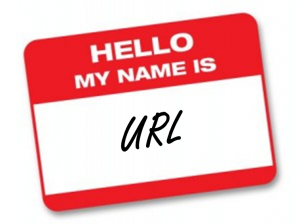Could it possibly be easier? Click. Drag. Drop. Done. Presto! Congratulations – you’ve just created a website.
With a few easy steps, you could be Picasso with pixels, an artist who needs no training to create a stunning website. This is the work of automated website builders, sites that simplify the otherwise coding- and time-intensive (not to mention expensive) process of building a website. They are the IKEA of the internet, clarifying an otherwise prohibitively complex task for the average user in a few steps, all the while staying easy on the eyes.

So, fortunately for you, dear readers, read no further. After having experienced this frustration myself, I will do my best to spare you from the dead-end searches for a service that is supposed to, at the end of the day, make our internet-based lives easier.
The audience for DIY website builders
This admittedly discursive venting touches upon an important distinction, one that, when ignored, has brought ruin on many a business plan: who is the target audience for these automated website builders? Are they targeting novices or professionals? The answer to this question has serious ramifications that quickly relate to differences in dollars. Does a website builder focus on its intuitiveness and ease of use to attract beginners, or does it add more power, features, and customability for more experienced and even professional users? More on the companies that do this later; for now, suffice it to say that this post is aimed towards the uninitiated tech greenhorns like myself.
So, let’s start from square one. Want to make a website?
Here’s how: on a high level, there are three basic parts to a web site, each of which parallels an element of brick-and-mortar stores:
- The domain name (for instance, ourcrowd.com), which is analogous to a business’s street address, directs the web browsers where to find the site.
- The web-hosting, or server, is the rented space on the web, similar to the a store’s square footage with the furnishings not included.
- The site files themselves, including of the text and images sent by the host from step #2 to the user, are what the furnishings and interior design are to a physical business.
So, even after you bought the domain on a registration service like godaddy.com or name.com, you still have to go through steps #2-3.
Or, skip all the steps and use a website builder
Enter automated website builders, which (ideally) simplify this process. Here is a list of free web hosting services (the vast majority of which have a free site builder). [Though not on this list, there also exist more specialized and/or not free site builders – like Zozolo (start a website within Facebook) or Strikingly (free, but consists only one page to optimize for mobile websites) – but for the purposes of this post, I’ll be focusing on easy-to-use, free, and comprehensive site builders.]

Leading the pack
Of all these options of free site builders, which to pick? I’ll discuss three interesting players – Wix, Weebly, and Jimdo – and if you’re still curious afterwards, feel free to try out some of the others. If you are interested in a more detailed comparison between these three sites, look at this very lucid slide deck for more information.

Similar in style and function to Wix, Weebly boasts 15 million registered users and is a bit quicker to use. It allows you to make a very decent website quickly and painlessly so that you can focus on other, presumably more important, things.
Looking to make an e-commerce site? One of the main advantages of Jimdo, with 8 million users, is that it’s a hassle-free way to build an online shop, which allows you to track your orders and inventory and has a secure payment portal.
Even though they are paid players, it’s worth briefly mentioning two more sites: SquareSpace’s visual aestethic is way richer than those of its competitors, and might be worth splurging on if your site is photo-intensive. SnapPages is a scrappy Austin-based bootstrapped startup that, with no venture funding or advertisements, and at most three full-time staff, has managed to remain profitable. In addition, SnapPages tries to appeal to both novices and developers, unlike other site builders, target one side of the aforementioned novice-expert dichotomy.
The future market for website builders

Website builders, 2 trends, and Jar Jar Binks
I think the automated site builders touch upon two important trends.

Second, in general, there is an interesting product/service shift going on. It was the fashion for a decade to “productize” a service in order to reap its commercial potential; now it may be the other way round, as we increasingly divest ourselves of the physical and lend increasing value to the virtual. However, the automated site builders represent a countervailing shift, a way of turning the service of website creation, previously done by coders, into a product that anyone can use. It’s akin to how Turbotax can elide the need for accountants. The immediate result of these sites is that coding won’t be a barrier of entry for someone to put up a website. In the future, perhaps more areas that were formerly coded will become automated, to the extent that one day we might look back on current forms of coding as passé as their punchcard predecessors, as something that once was a sine qua non but now is almost totally automated for the masses.
Speculation aside, automated site builders are making websites easier to make, which is good, and the internet generally more accessible, which is also good. In the meantime, enjoy being Rembrandt on Rails. I wonder if that domain name is taken…
[xyz-ihs snippet=”ShlomoKlapper”]








